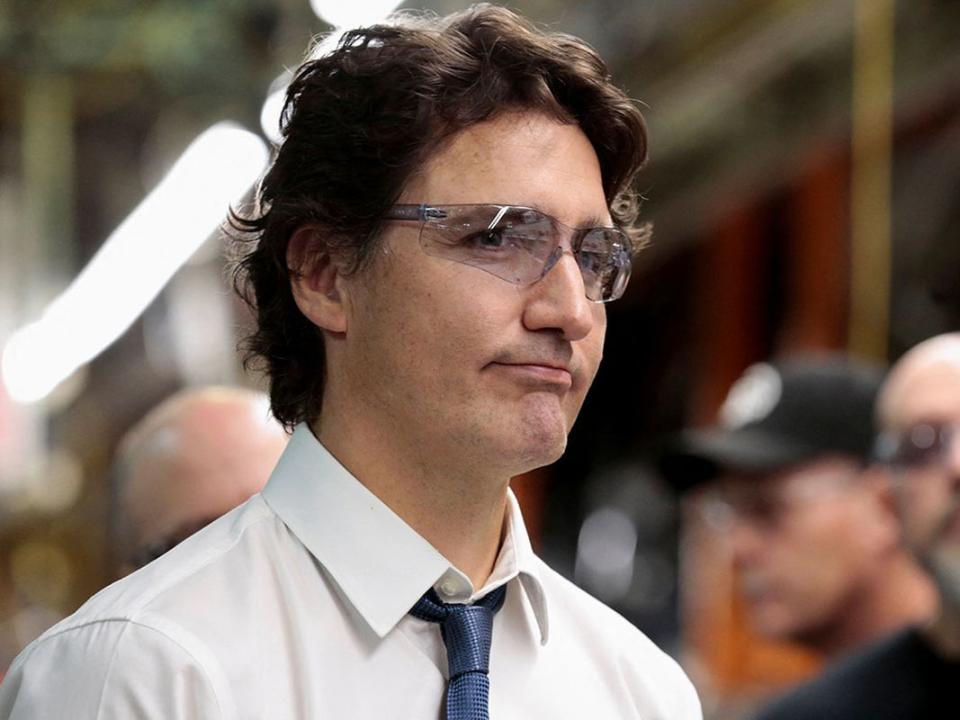Pressure mounts as Stellantis Windsor battery plant negotiations drag on

Stellantis NV has not struck a deal with the federal government to resume work in Windsor, Ont., on what would be Canada’s first electric vehicle battery manufacturing gigafactory, despite news reports to the contrary.
“Stellantis does not confirm what has been reported and to date has not received an official response from its previously sent letters,” the company said in a statement on June 1.
It’s the latest twist in Canada’s quest to secure a battery gigafactory in Windsor — the unofficial capital of the country’s auto sector, located just across a river from Detroit, Mich. The plant is a proposed joint venture between Stellantis, owner of Chrysler, Jeep, Alfa Romeo and other brands, and South Korea’s LG Energy Solution Ltd., and is expected to sprawl across 4.5 million square feet, or about 112 hockey rinks and to create 2,500 jobs. But Stellantis abruptly halted construction in mid-May as it negotiates to get more government subsidies.
Here’s what you need to know about what’s happened so far:
Work stoppage
On May 15, the company said “the Canadian government has not delivered on what was agreed to,” and that it and its joint venture partner LG Energy would cease all work related to “battery module production” and implement “contingency plants.”
Two days later, on May 17, the company released another statement saying that it and LG Energy “simply ask that the Canadian government keep its commitments in relation to what was agreed last February and which led us to continue construction work of the gigafactory in Windsor.”
So far, neither side has disclosed exactly what was agreed to in February, though the basic outlines of the dispute are clear: In May 2022, Stellantis and LG Energy agreed to build a 45 gigawatt-hour battery plant in Windsor. Both the provincial and federal government provided financial incentives to entice the companies to build the battery plant in Canada. Although the exact level of the government contributions were never formally disclosed, sources estimated initial commitments to be at least $1 billion to offset the $5-billion construction costs.
But five months later, in August 2022, U.S. President Biden signed the Inflation Reduction Act (IRA), which provides companies a tax credit based on the capacity in kilowatt hours of batteries produced. This includes up to US$35 per kilowatt-hour for battery cells and up to US$45 per kilowatt-hour in the case of battery modules — all provided the battery plant is located in the United States.
Afterward, Stellantis and LG Energy returned to the negotiating table with Canada seeking IRA-level subsidies. Stellantis said the government made new commitments in February — though it has never said exactly what those commitments were.
Volkswagen subsidies
This April, the federal government revealed that as part of its deal with Volkswagen AG — which agreed to build a 90 Gwh battery manufacturing plant in St. Thomas, Ont. — it would provide subsidies not only for the onetime construction costs, but also on an ongoing basis for every battery produced.
Those subsidies, which were negotiated to match the IRA incentives, could be worth between $8 billion and $13.2 billion by the time they expire in 2032, according to the federal government.
Although the Windsor plant is expected to be half the size of Volkswagen’s St. Thomas plant, it is expected to be operational by 2024, three years before VW is expected to begin producing — and collecting production tax credits — in 2027. That earlier start means the Stellantis and LG plant may collect more production tax credits, which by some estimates mean it could attain $19 billion in subsidies.
Sticking points in talks
Windsor Mayor Drew Dilkens said last month in an interview that he did not have perfect clarity on the sticking points in the negotiations with Stellantis and LG, but believed it related to the subsidies for battery modules.
Dilkens estimated that manufacturing modules — a cluster of cells — may account for 300 of the roughly 2,500 jobs at the battery plant.
But he added it’s not quite that simple: There is also a research and development centre attached to the battery plant, which could be threatened if the government does not subsidize the modules.
“I’m not privy to those negotiations,” said Dilkens, “but I believe the module piece, and the incentive for the modules was also part of the incentive for the R&D jobs and so if you hive off one, how does it affect the other? That’s something that has to be talked about.”
Ontario Premier Doug Ford said last month that his province would increase the level of subsidies it is offering Stellantis and LG Energy, but did not disclose any details.
Meanwhile, federal Industry Minister François-Philippe Champagne has characterized the work stoppage as part of normal negotiations.
Laurie Bouchard, a spokesperson for Champagne’s ministry, said via email that no deal had been reached and that things were “still in discussions.”
High stakes
Stellantis could move the plant to the U.S., and the Windsor Star reported the company may also move an assembly plant out of Brampton, Ont., pending the outcome of its negotiations.
Stephen MacKenzie, chief executive of InvestWindsor Essex, the local economic redevelopment corp., said if the battery plant is ultimately constructed, he believes there will be somewhere between $1 billion and $3 billion in investment in the area from suppliers for the plant.
“It’s absolutely has served as a catalyst for this” investment, said MacKenzie.
“If this deal gets done, I will be applauding the government to say, ‘Yes, it’s (an) extraordinary amount of money, but it’s an investment that we must make to secure the economic future,’” he added. “I will be their biggest supporter, as long as this gets done, and as long as the company, of course, is happy at the end of the day.”
• Email: gfriedman@postmedia.com | Twitter: GabeFriedz

 Yahoo Finance
Yahoo Finance 